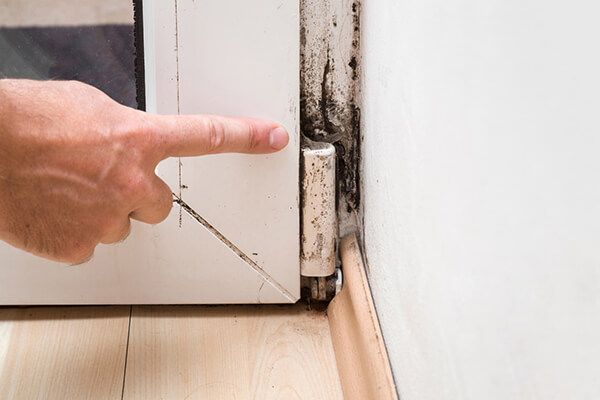Accessing Local Post Remediation Mold Testing Near Me
Accessing Local Post Remediation Mold Testing Near Me
Blog Article
Effective Article Mold And Mildew Removal Solutions for Your Home
Mold development in homes can be a persistent concern, typically requiring an organized method for reliable post-remediation options. From understanding the variables that contribute to mold and mildew development to carrying out proper cleansing techniques and wetness control measures, the process can be intricate yet critical for maintaining a healthy and balanced living environment. Post Remediation verification.
Recognizing Mold Growth Aspects
Mold development is affected by a selection of elements that are critical to comprehend in order to properly resolve and avoid its proliferation. Understanding these factors is important in executing effective mold removal methods. The key factor contributing to mold growth is moisture. Mold spores need wetness to sprout and grow, making damp or humid atmospheres extremely at risk to mold and mildew problems. Poor air flow can likewise bring about moisture build-up, developing an optimal breeding ground for mold.

In addition, airflow and light direct exposure can impact mold and mildew development. Areas that do not have proper air flow and all-natural light are much more vulnerable to mold advancement. By addressing these aspects comprehensively, individuals can properly mitigate mold development and safeguard their living atmospheres.
Correct Mold Cleansing Techniques
Utilizing efficient cleansing approaches is vital in resolving and preventing the reoccurrence of mold and mildew contamination in interior settings. When dealing with mold, it is important to focus on safety and security by wearing protective gear such as safety glasses, masks, and handwear covers. The very first step in correct mold cleaning is to contain the affected area to avoid the spread of spores to uncontaminated areas. This can be accomplished by sealing off the area and utilizing air scrubbers or unfavorable air makers to preserve air high quality.

Executing Dampness Control Measures
To successfully prevent mold and mildew growth and contamination in interior environments, applying moisture control actions is critical. In addition, making sure correct ventilation in locations prone to moisture build-up, such as restrooms and cooking areas, can aid decrease the threat of mold growth. By faithfully executing these wetness control measures, property owners can properly reduce the probability of mold and mildew recontamination and maintain a healthy interior setting.
Using Natural Removal Solutions
After efficiently executing wetness control actions to prevent mold development in interior settings, homeowners can now check out the performance of natural remediation remedies in maintaining a healthy home. All-natural removal options utilize eco-friendly methods to fight mold and mildew, making them a prominent selection for those seeking non-toxic alternatives. One such solution is using vinegar, a natural antimicrobial agent, to clean and disinfect surfaces contaminated by mold. Simply dilute vinegar with water and spray it onto the affected areas, allowing it to rest for a couple of hours prior to wiping tidy. Furthermore, tea tree oil, understood for its antifungal properties, can be combined with water and splashed onto mold-infested surface areas to hinder additional growth. One more natural alternative is hydrogen peroxide, which can properly eliminate mold and mildew on numerous surfaces without leaving hazardous residues behind. By incorporating these all-natural removal options into their cleaning regimens, home owners can successfully deal with mold growth while advertising a healthier indoor setting on their own and their households.

Preserving a Mold-Free Setting
Consistently evaluating locations prone to mold development, such as shower rooms, cellars, attic rooms, and kitchens, is critical. Appropriate ventilation in locations with high moisture levels is additionally crucial to avoiding mold development.
Furthermore, preserving sanitation in the home is vital for mold prevention. Keeping interior plants in check and making certain proper drainage in outside landscaping can lessen dampness accumulation, lowering the chance of click resources mold and mildew infestations.
Verdict
To conclude, it is important to deal with mold and mildew growth elements, make use of appropriate our website cleansing methods, apply wetness control actions, use all-natural remediation options, and maintain a mold-free atmosphere in order to effectively take care of post mold removal in your home - Post Mold remediation cleaning. By following these methods, you can prevent mold from persisting and make certain a healthy living atmosphere for you and your family members
The primary element adding to mold and mildew development is moisture. Mold spores need dampness to flourish and sprout, making wet or moist atmospheres extremely at risk to mold and mildew infestations.To efficiently avoid mold and mildew development and contamination in interior settings, applying moisture control measures is critical. Furthermore, making sure correct air flow in locations vulnerable to moisture build-up, such as washrooms and cooking areas, can aid lower the threat of mold and mildew development.After effectively carrying out wetness control procedures to stop mold growth in indoor environments, property owners can now explore the performance of all-natural remediation remedies in keeping a Recommended Reading healthy and balanced living area.
Report this page